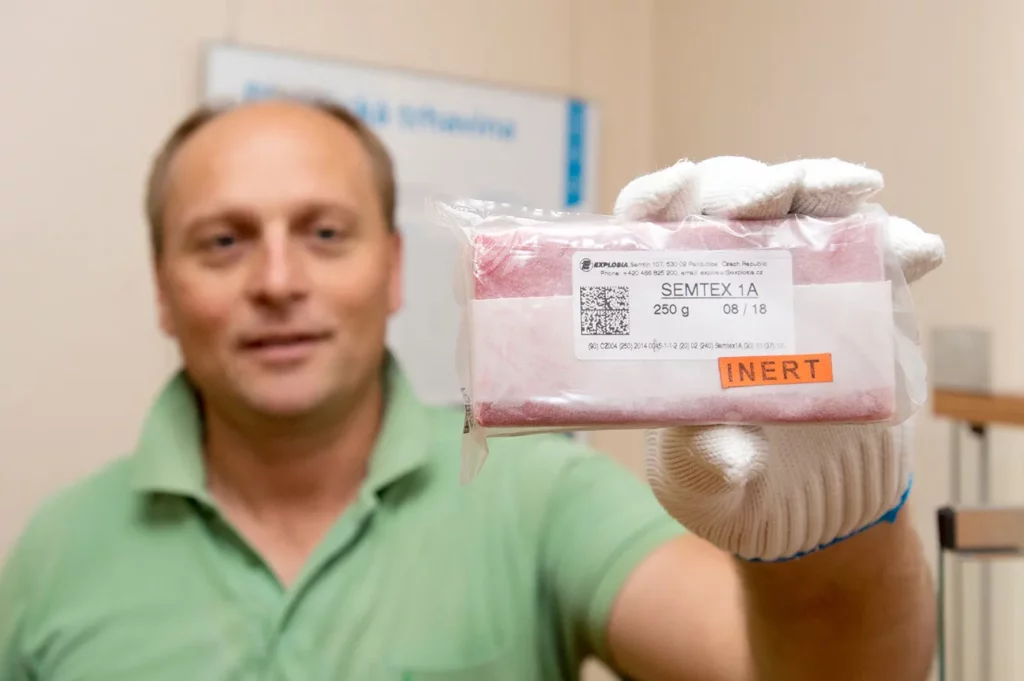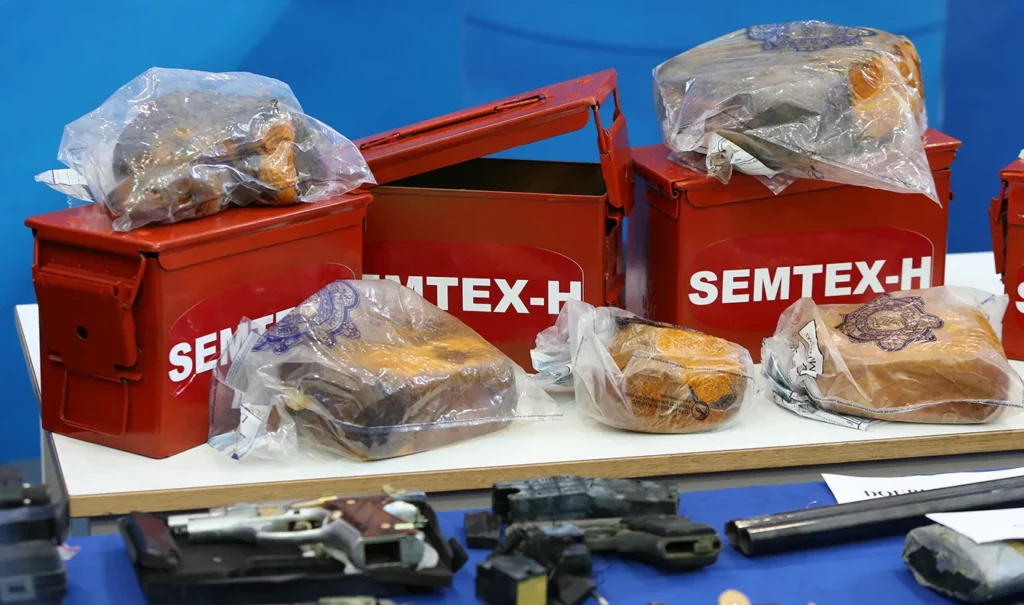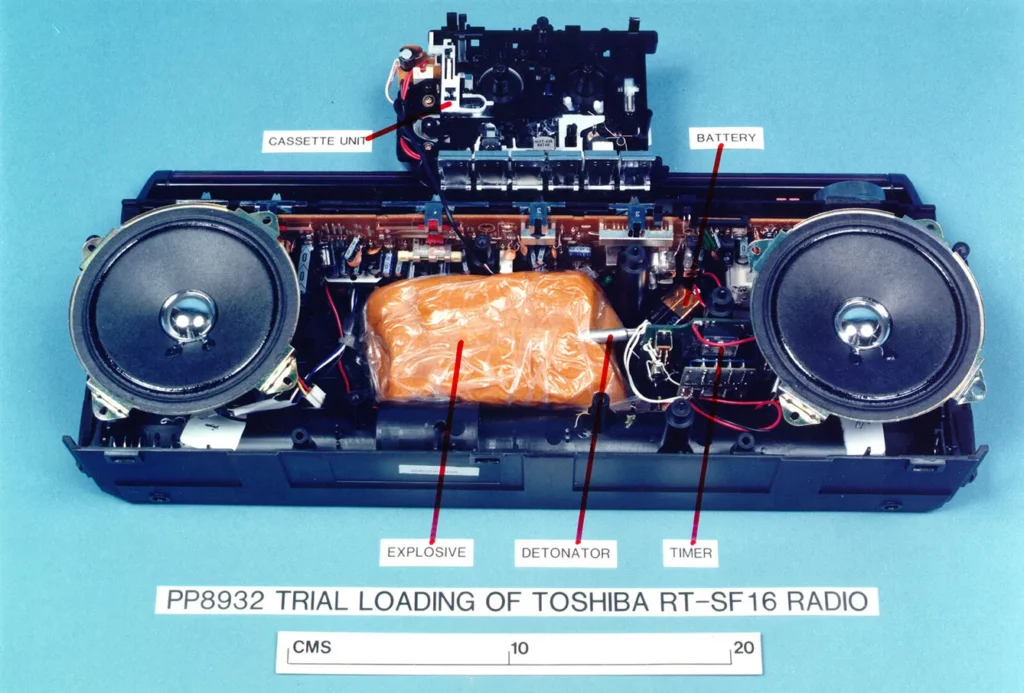There are still disputes about what is the most famous Czech product. Many mention beer, others the word “robot” or Škoda cars. But one would hardly look for a product that has spread worldwide and is surrounded by legends such as the now legendary Semtex explosive. To this day, Semtex is shrouded in a series of conspiracy theories and unverified speculations that only fuel its revolutionary nature.
A local product with a global reach
The demand for plastic explosives dates back to World War II when there was a need for easily formable, waterproof, and powerful explosives for various military operations. Research into such explosives began in Czechoslovakia immediately after the end of the war.




The research took several years, and in 1953 the production of the explosive B1 officially began on the premises of the Pardubice state arms company Explosia. Production began immediately after testing was completed. In 1964, the explosive changed its name from B1 to Semtex. Semtex combines the name of the Pardubice city district Semtín (where the company is located) and the name of the company: SEMTín + EXplosia = SEMTEX.
The explosive plastic
Semtex was rocketing in popularity. That was because of its stability, explosive power, and extreme plasticity. It is such a stable explosive that even a direct hit from infantry weapons will not ignite it. Moreover, Semtex is very durable: it will last many years in a standard environment and can withstand a temperature range of -40 °C to +60 °C. Due to its excellent properties, it was the primary plastic explosive of the Warsaw Pact armies (i.e., the armies of the Eastern Communist Bloc).
Its stability, untraceability, and unidentifiability also made it popular among rebel and terrorist groups worldwide. Perhaps the biggest mystery and controversy surrounding Semtex is whether it was the primary explosive used by Libyan terrorists in the 1988 destruction of a US airliner over Lockerbie, Scotland. Precisely because of the difficulty of identifying plastic explosives (and Semtex in particular), it is still unknown what explosive was used then.
The Czech Semtex was so often mentioned in the media those days that it became synonymous with plastic explosives for many decades. Common people, journalists, and even film producers often used the name Semtex for all kinds of plastic explosives.
A new era of good Semtex and its new uses
Semtex exports broke records in communist times. Most of it was exported to Libya and Vietnam (according to some estimates, up to 1000 tons to each country). Precisely because of its problematic nature, the export of explosives was banned in 1981 and was produced only for the needs of the Warsaw Pact. However, it is questionable whether Semtex was not resold, especially by the German Democratic Republic (East Germany), which traded extensively with socialist regimes and communist rebels in Africa.
After the Velvet Revolution in 1989, its export outside Czechia was banned altogether. After the stabilization of the internal political situation in Czechia, Semtex exports were resumed in 1991. Nowadays, about 10 tons of Semtex are exported annually to the world, according to official information from Explosia.
Today, it is used more for civilian needs. In the mines, it is used for stone blasting. Semtex also helps in industry, where a specially modified version is used for welding: using the explosion, the metal gains several times more resistance. Alternatively, it is used to cut thick metal sheets.
Finally, Semtex remains true to its original purpose. It proudly serves in the Czech army as a plastic explosive that can be shaped at will and as a so-called breakthrough frame that can be attached to a door, window, or wall and “open” the selected space or passage.
See Also: The Czech App That Saves Lives







